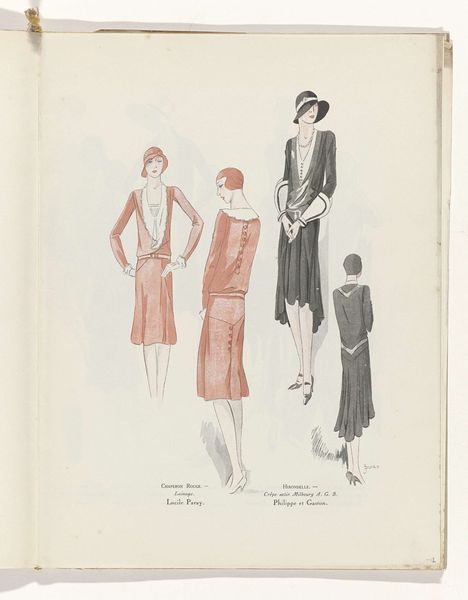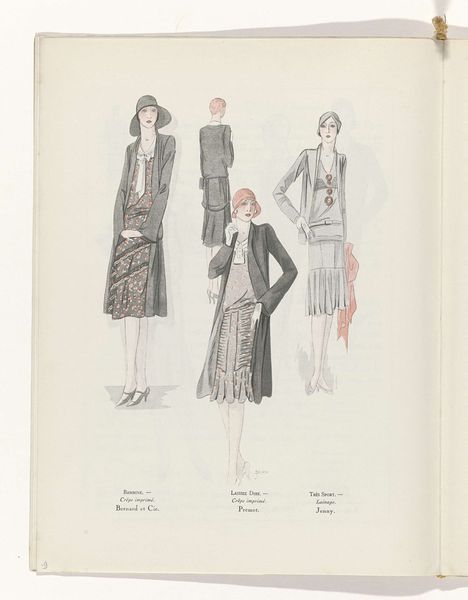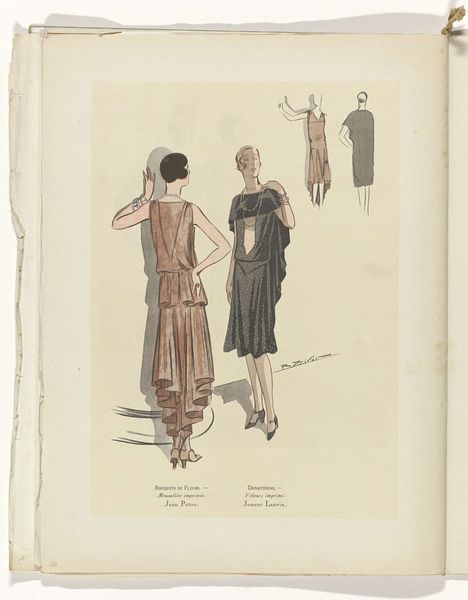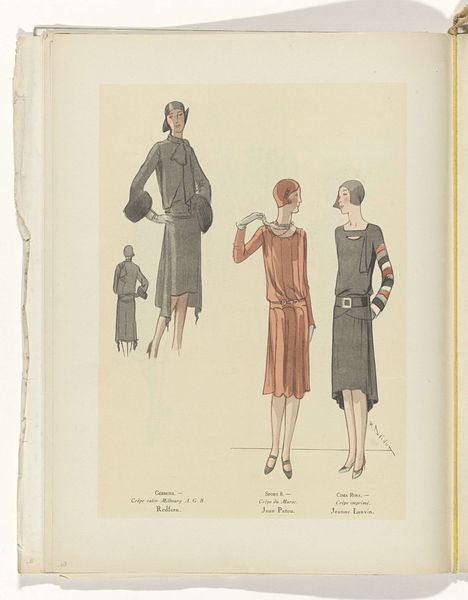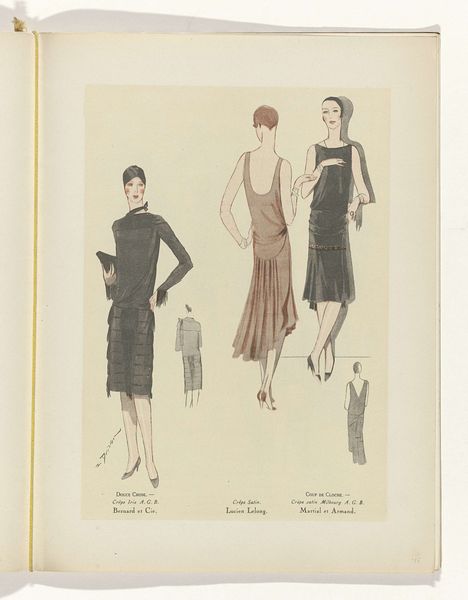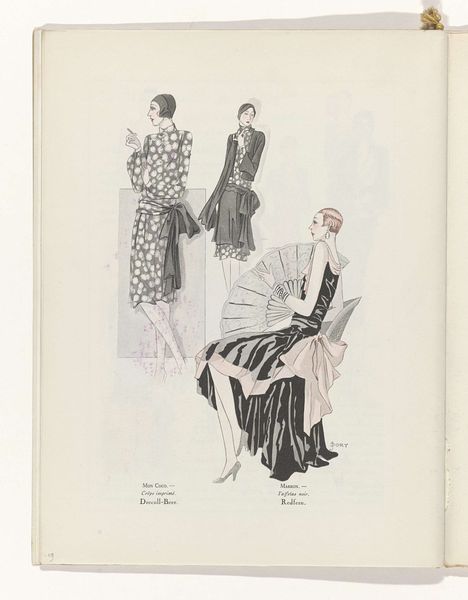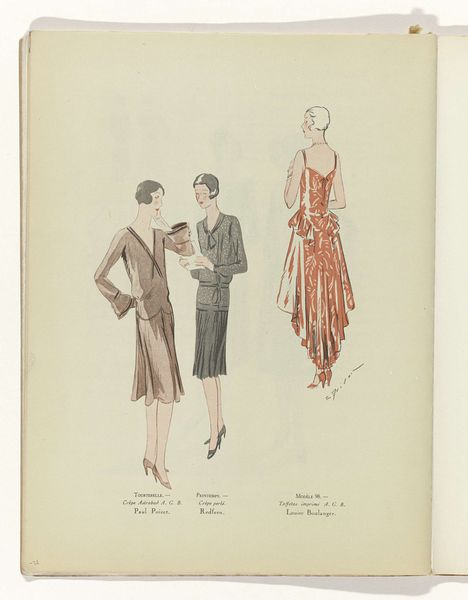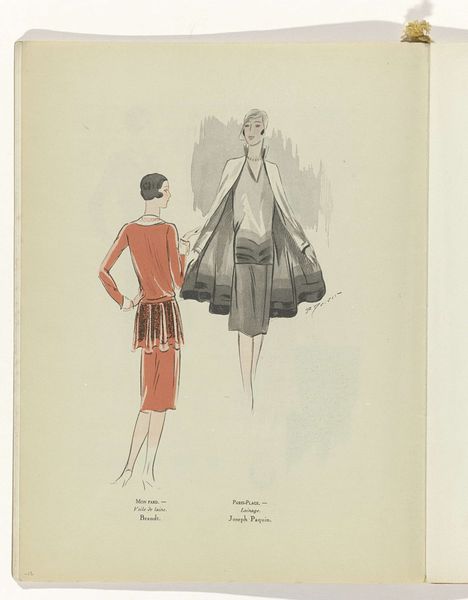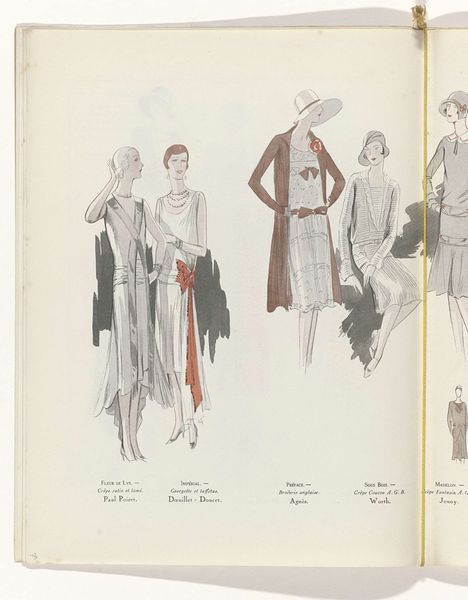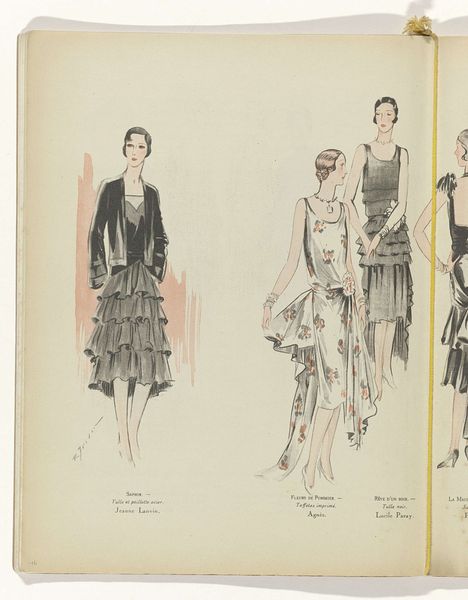
Art - Goût - Beauté, Feuillets de l' élégance féminine, Juin 1929, No. 106, 9e Année, p.18 1929
0:00
0:00
jdory
Rijksmuseum
watercolor
#
portrait
#
art-deco
#
figuration
#
watercolor
#
watercolour illustration
#
decorative-art
#
dress
Dimensions: height 315 mm, width 240 mm
Copyright: Rijks Museum: Open Domain
Curator: Before us we have "Art - Goût - Beauté, Feuillets de l'élégance féminine, Juin 1929, No. 106, 9e Année, p.18" from 1929, housed here at the Rijksmuseum. This artwork presents a series of fashion illustrations, attributed to J. Dory, rendered with watercolour. Editor: My immediate impression is one of understated elegance. The muted palette and delicate linework create a sense of refined taste, but the composition feels somewhat static. Curator: I agree, that the artist conveys the essence of femininity through this piece by focusing on fashion, presentation, and elegance. Let's consider the broader cultural context—post-World War I France. Fashion played a significant role in expressing societal changes, women sought liberation through dress. Here, J. Dory reflects this transition through art, subtly promoting change and individuality. Editor: Indeed, the lines create definition and direct the gaze from one ensemble to another. It calls on similar ideas to Cubism with fragmented realities on one picture plane. I am quite impressed by the controlled tonal range that helps give a visual definition to each of the ensembles. The details in these pieces help the forms feel well defined. Curator: Notice how the women are positioned: They don’t merely display garments but embody archetypes of modern femininity; the urban woman, the domestic goddess, etc. Each pose and the fabrics worn are intended to convey societal roles and freedoms available to the interwar women. What do you feel the artwork may suggest about access to couture fashion? Editor: A sense of carefully constructed aesthetic experience comes from its forms and compositional components. What do you take away after our chat? Curator: What resonates with me is Dory's talent for highlighting both societal expectations for women at that period while acknowledging their freedom of expression, allowing us to understand a more complex period. Editor: The interplay between geometry and organic shapes speaks to that period. It really highlights how composition guides meaning within an art piece.
Comments
No comments
Be the first to comment and join the conversation on the ultimate creative platform.
